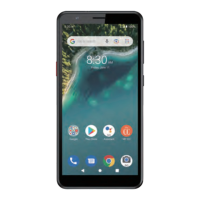32 33
FOR YOUR SAFETYFOR YOUR SAFETY
RADIO FREQUENCY INTERFERENCE
General Statement on Interference
Care must be taken when using your phone in close proximity to personal
medical devices, such as pacemakers and hearing aids. Please consult your
doctor and the device manufacturers to determine if the operation of your
phone may interfere with the operation of your medical devices.
Pacemakers
Pacemaker manufacturers recommend that a minimum separation of 15 cm
be maintained between a mobile phone and a pacemaker to avoid potential
interference with the pacemaker. To achieve this, use the phone on the
opposite ear to your pacemaker and do not carry it in a breast pocket.
Hearing Aids
People with hearing aids or other cochlear implants may experience
interfering noises when using wireless devices or when one is nearby. The
level of interference will depend on the type of hearing device and the
distance from the interference source. Increasing the separation between
them may reduce the interference. You may also consult your hearing aid
manufacturer to discuss alternatives.
Medical Equipment
Turn o your wireless device when you are requested to do so in hospitals,
clinics or health care facilities. These requests are designed to prevent
possible interference with sensitive medical equipment.
Aircraft
Turn o your wireless device whenever you are instructed to do so by
airport or airline sta.
Consult the airline sta about the use of wireless devices onboard the
aircraft and enable airplane mode on your phone when boarding an aircraft.
Interference in Vehicles
Please note that because of possible interference with electronic
equipment, some vehicle manufacturers forbid the use of mobile phones in
their vehicles unless a hands-free kit with an external antenna is included in
the installation.
EXPLOSIVE ENVIRONMENTS
Gas Stations and Explosive Atmospheres
In locations with potentially explosive atmospheres, obey all posted signs to
turn o wireless devices such as your phone or other radio equipment.
Areas with potentially explosive atmospheres include fueling areas, below
decks on boats, fuel or chemical transfer or storage facilities, and areas
where the air contains chemicals or particles, such as grain, dust, or metal
powders.
Blasting Caps and Areas
Power o your mobile phone or wireless device when in a blasting area or
in areas where signs are posted to power o “two-way radios” or “electronic
devices” to avoid interfering with blasting operations.

